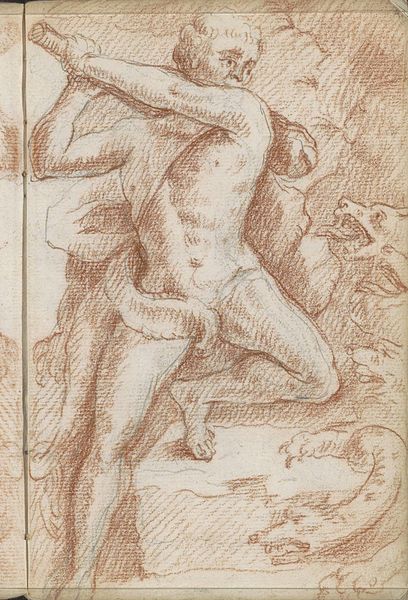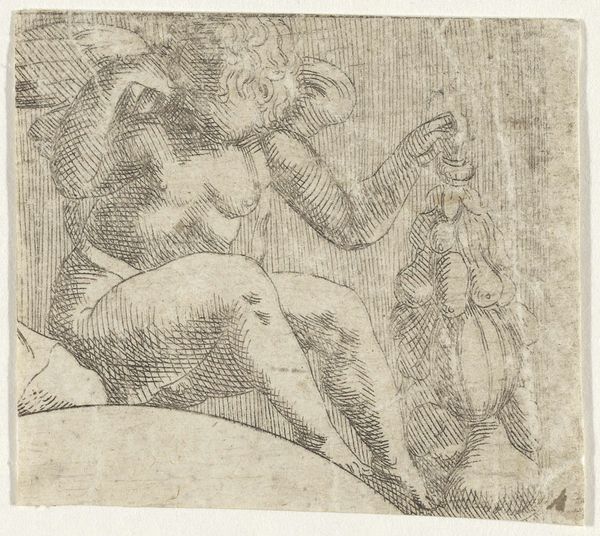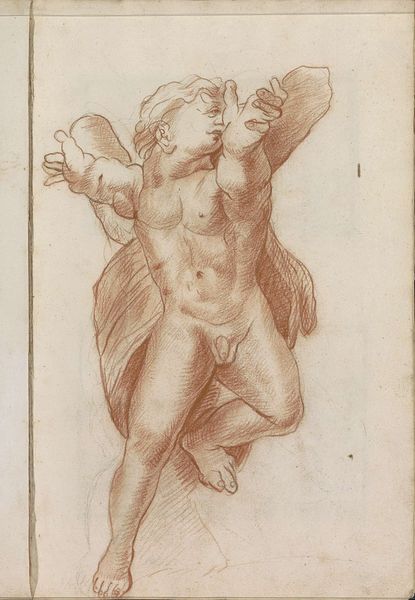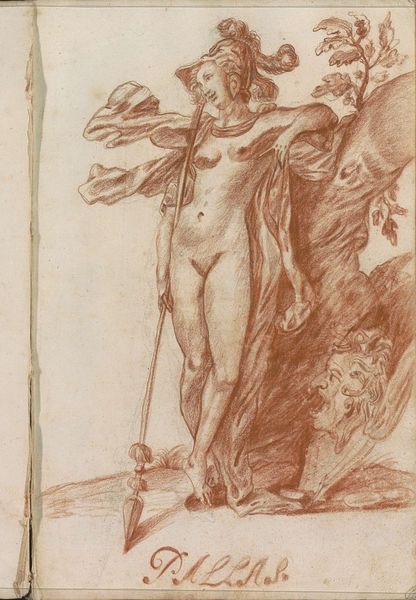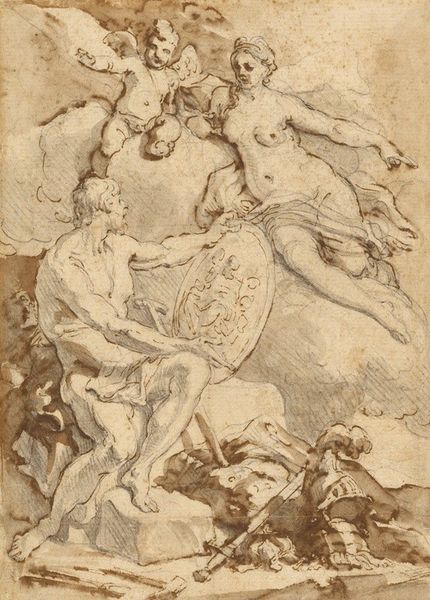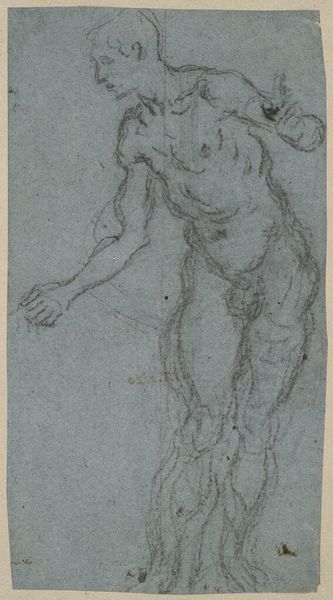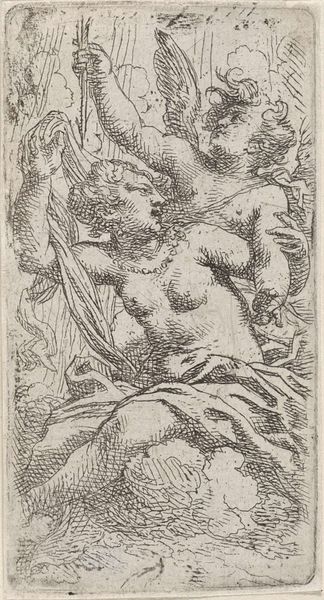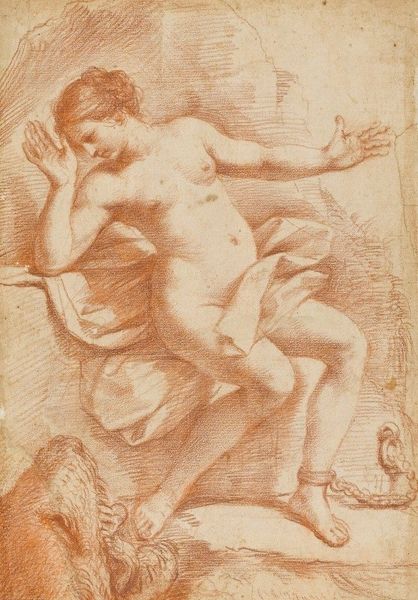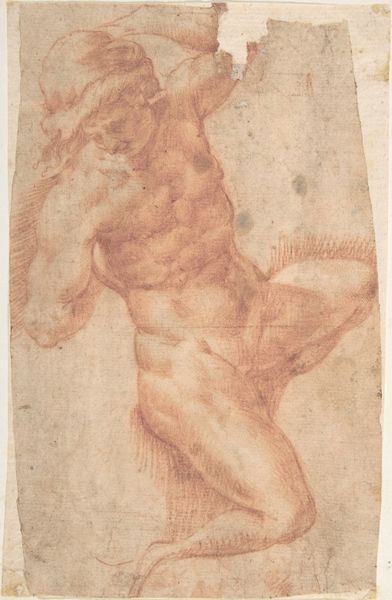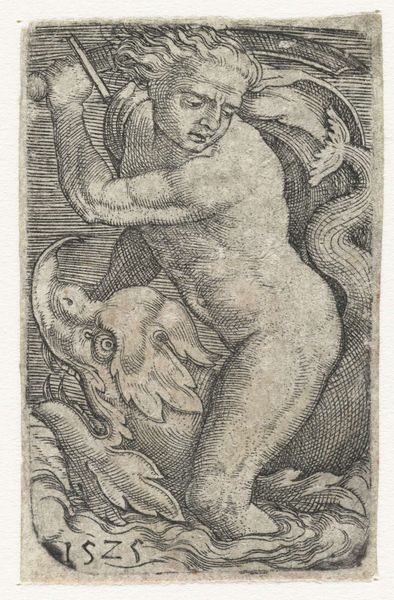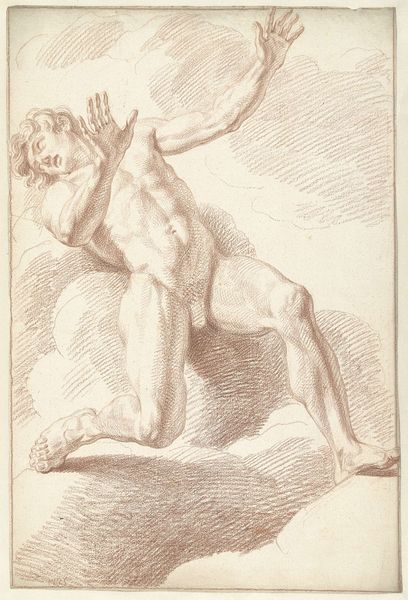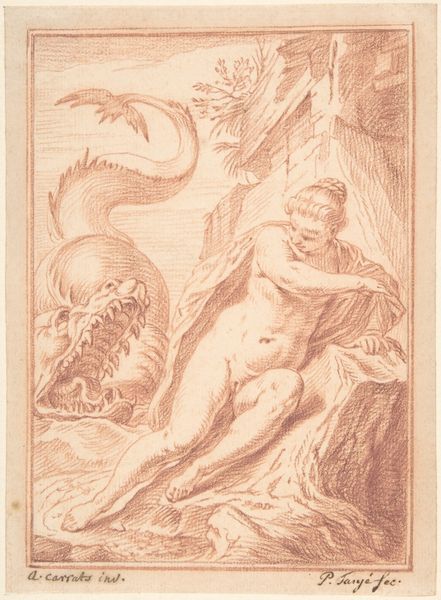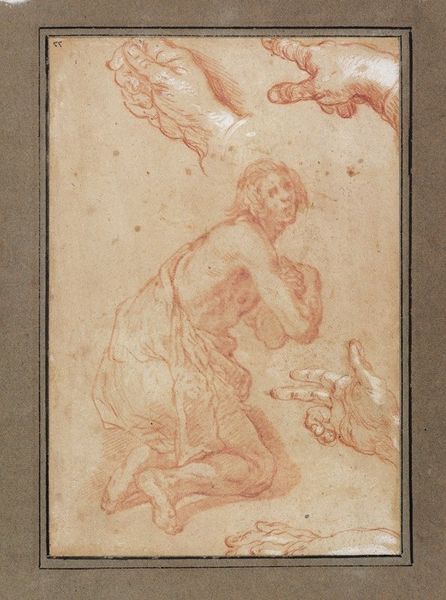
drawing, pencil
#
drawing
#
figuration
#
coloured pencil
#
pencil
#
history-painting
Copyright: Rijks Museum: Open Domain
Editor: This drawing, "Abklatsch van de krijttekening op blad 4 recto," by Petrus Johannes van Reysschoot, made sometime between 1710 and 1772, employs pencil and possibly coloured pencil to depict what looks like a classical scene. I’m immediately struck by the emphasis on the body, and its raw physicality, rendered through simple means. How would you approach interpreting this work? Curator: Given the likely timeframe of this drawing's creation, it is important to recognize it was part of academic training heavily steeped in traditions valuing draftsmanship. The physical act of repeatedly copying established drawings formed the basis for instruction. The choice of relatively accessible materials—pencil, paper—indicates an economical approach to training, focusing on process. The “history-painting” theme suggests it was part of developing grand narrative skill, so where does labor enter the narrative? Editor: So you're suggesting this is less about the subject, and more about the exercise of production itself, the kind of labour involved? The raw sketchiness, then, reflects the stage of the artistic process, rather than an aesthetic choice? Curator: Precisely. We often celebrate the virtuosity of the 'finished' product, overlooking the hours of preparatory labor – the repeated drawings, the cheaper practice mediums employed that led to it. Also consider the cost involved when deciding which paper to practice on, it shows the access artists may or may not have to more valuable material. Does this change the perception of the work for you? Editor: Definitely. Thinking about it as an exercise in skill acquisition really reframes it. I initially saw this as an incomplete art piece. I didn't think about the resources required. Curator: Exactly. What initially seemed to be an emphasis on an idealized male form and an engagement with mythology becomes transformed. This is less about that tradition itself and about an artist's education through his work using readily available resources. Editor: It highlights the usually unseen labor of artistic training, a kind of art before ‘art.’ I never thought about an artwork focusing on the labour using minimal resources. Thanks! Curator: A pleasure! Examining these often-overlooked pieces reveals art history’s relationship to wider economies of skill, class, and materiality.
Comments
No comments
Be the first to comment and join the conversation on the ultimate creative platform.
